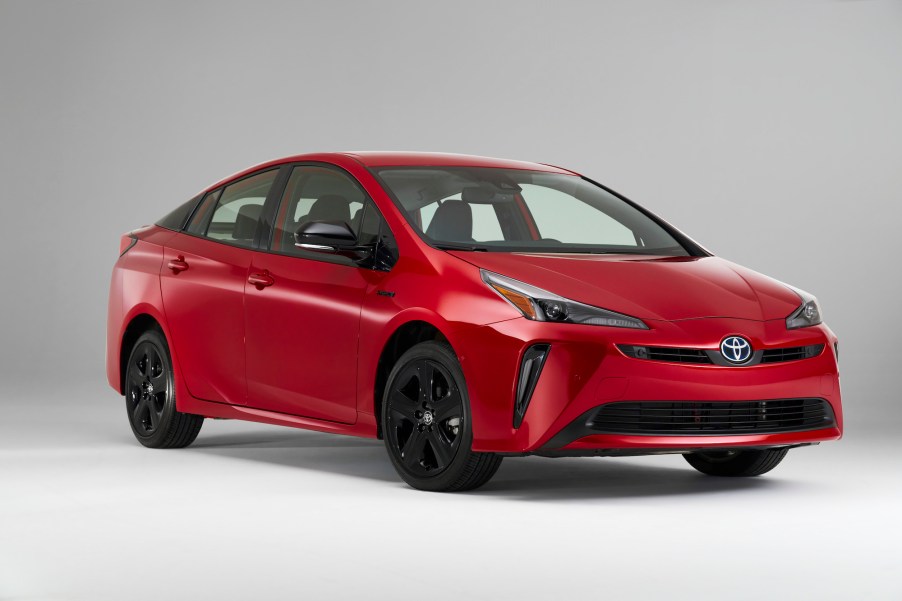
Is the Toyota Prius Prime an EV?
The 2022 Toyota Prius Prime is a unique model in the Prius lineup. First released in Japan in 1997, the Prius has been popular among the eco-friendly crowd. The Prime is the next generation following the cancellation of the Prius C and Prius V.
So, is the Prius Prime a hybrid like the regular Prius, or does its higher price indicate that it’s an EV? Let’s look at the Prius Prime and how it differs from its predecessors.
Features and specs of the Prius Prime

The Prius Prime has a starting MSRP of $28,670. Consumer Reports lists it as recommended with an impressive overall score. It is powered by a 4-cylinder engine and a continuously variable automatic transmission, or CVT, that also helps with efficiency.
The Prime can deliver 121-hp at 0 to 60 mph in 10.8 seconds. Toyota extended its hybrid battery warranty from 8 years or 100,000 miles to 10 years from the date of first use or 150,000 miles, whichever comes first. This is in addition to the 3 years or 36,000-mile basic and the 5 years or 60,000-mile powertrain warranty.
The Prius Prime is offered in LE, XLE, and Limited options. The XLE includes a touch-screen monitor, heated seats, and a QI-compatible wireless phone charger. The Limited has features such as a color heads-up display and a blind spot mirror with a rear cross-traffic alert.
Is the Prime and EV or a hybrid?
The Prime is technically a PHEV, or plug-in hybrid. The difference between a hybrid and a plug-in hybrid has to do with when the engine is used. Standard hybrid vehicles rely on its gas engines to keep its batteries charged as you drive. However, a plug-in hybrid will use electric exclusively until the charge is depleted then switch over to standard hybrid.
Charging the Prime is very reasonable when compared to other EVs. The battery takes two hours to recharge, and each session consumes about 6 kWh via a 240-volt connection. On standard 120-volt power, the Prime takes just five hours to charge, so it can easily be fully charged overnight without the need for additional charging equipment. When compared to the 12 hours-plus most EVs require on a 120-volt connection, the Prime certainly has an advantage over the competition.
The Prime has an average range of 22.5 miles on electric power thanks to an 8.8-kWh lithium-ion battery. After the electric miles are depleted, it reverts to regular hybrid operation. Even when accelerating quickly or climbing hills, it stays in electric mode, which is a departure from the standard Prius.
The Prime could be used as an EV
Though it’s not technically an EV, the Prime can be used as an EV if it is charged often. One of the best features of the PHEV is that if your charge is depleted before you reach your destination, you can still rely on your gas engine to get you where you are going.
Because of the considerably smaller battery, the distance that you can travel on your charge is much smaller than traditional EVs, with most of them getting 250 miles and up on a single charge. The Prime gets an overall 69 mpg, which is considerably better than the original Prius with 52 mpg.
Even though the Prius Prime isn’t technically an EV, it combines the best of both worlds. You have the ability to operate it exclusively as an EV, and you also have the reliability of a hybrid.


